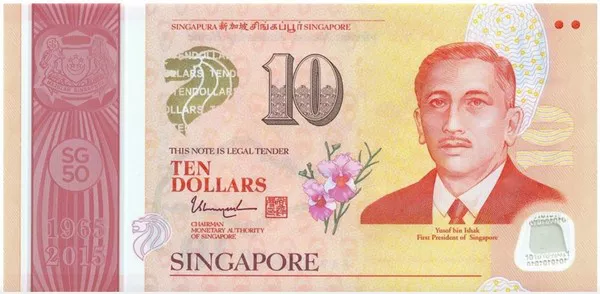The Singapore dollar (SGD) holds a significant place in the global currency market, reflecting the economic prowess and stability of the city-state. Understanding the factors that influence the value of one Singapore dollar requires an exploration of Singapore’s unique currency landscape, historical context, monetary policies, and key economic indicators. In this article, we delve into the intricacies of the Singapore dollar and shed light on the various determinants behind its worth.
Understanding the Currency Landscape in Singapore:
Singapore has established itself as a thriving financial center with a robust economy and an open trading environment. As a result, the Singapore dollar has gained recognition as a stable and internationally accepted currency. It serves as the official legal tender within the country and plays a pivotal role in facilitating domestic and international trade.
Historical Overview of the Singapore Dollar:
The history of the Singapore dollar dates back to 1967 when it was introduced to replace the Malaysian dollar following Singapore’s separation from Malaysia. Over the years, the currency has undergone various transformations to solidify its position as a reliable medium of exchange.
Factors Influencing the Value of the Singapore Dollar:
1. Economic Performance:
The overall economic health of Singapore significantly impacts the value of its currency. Key factors such as GDP growth, employment rates, productivity, and inflation rates influence investor sentiment and foreign exchange flows, thereby affecting the demand and supply dynamics of the Singapore dollar.
2. Trade Balance:
As an export-oriented nation, Singapore heavily relies on international trade. The trade balance, which measures the difference between exports and imports, plays a vital role in determining the value of the Singapore dollar. A positive trade balance, indicating higher export revenues than import expenses, strengthens the currency.
3. Interest Rates:
Interest rates are crucial in attracting foreign investment and influencing currency values. The Monetary Authority of Singapore (MAS) utilizes interest rate adjustments as a tool to manage inflation and maintain price stability. Divergences in interest rates between Singapore and other countries can impact the exchange rate and the value of the Singapore dollar.
4. Foreign Direct Investment (FDI):
Singapore has been successful in attracting substantial foreign direct investment due to its business-friendly policies, infrastructure, and skilled workforce. FDI inflows contribute to the strength of the Singapore dollar by bolstering capital inflows, enhancing economic growth, and increasing demand for the currency.
Singapore’s Monetary Policy and Exchange Rate System:
The Monetary Authority of Singapore (MAS) is responsible for formulating and implementing monetary policies to ensure price stability, sustainable economic growth, and financial stability. Unlike many countries, Singapore does not have a specific target exchange rate or utilize a fixed exchange rate system. Instead, it employs a managed float regime known as the “Singapore Dollar Nominal Effective Exchange Rate” (S$NEER). The S$NEER policy aims to maintain a stable and competitive exchange rate by allowing the Singapore dollar to fluctuate within a specified band against a basket of currencies of Singapore’s major trading partners.
The Impact of Economic Indicators on the Singapore Dollar’s Value:
1. Gross Domestic Product (GDP):
GDP growth is a critical indicator of Singapore’s economic performance. Robust GDP growth encourages investor confidence, attracts capital inflows, and subsequently strengthens the Singapore dollar.
2. Inflation Rates:
Inflation affects the purchasing power of a currency. Singapore’s low and stable inflation rates contribute to the Singapore dollar’s value, making it an attractive currency for both investors and consumers.
3. Employment Rates:
Low unemployment rates signify a strong labor market, which positively impacts consumer spending and aggregate demand. Consequently, this can lead to increased economic activity and strengthen the Singapore dollar’s value.
4. Industrial Production:
Industrial production measures the output of Singapore’s manufacturing and industrial sectors. Positive growth in industrial production suggests a thriving economy and often translates into an increase in foreign exchange flows, bolstering the value of the Singapore dollar.
Conclusion:
The value of one Singapore dollar is influenced by various factors, including economic performance, trade balance, interest rates, and foreign direct investment. Singapore’s stable economy, sound monetary policies, and favorable business environment contribute to the strength and international acceptance of the Singapore dollar. As an integral component of Singapore’s financial landscape, the value of the Singapore dollar remains dynamic, reflecting the country’s ongoing efforts to maintain economic stability and competitiveness in the global arena.


